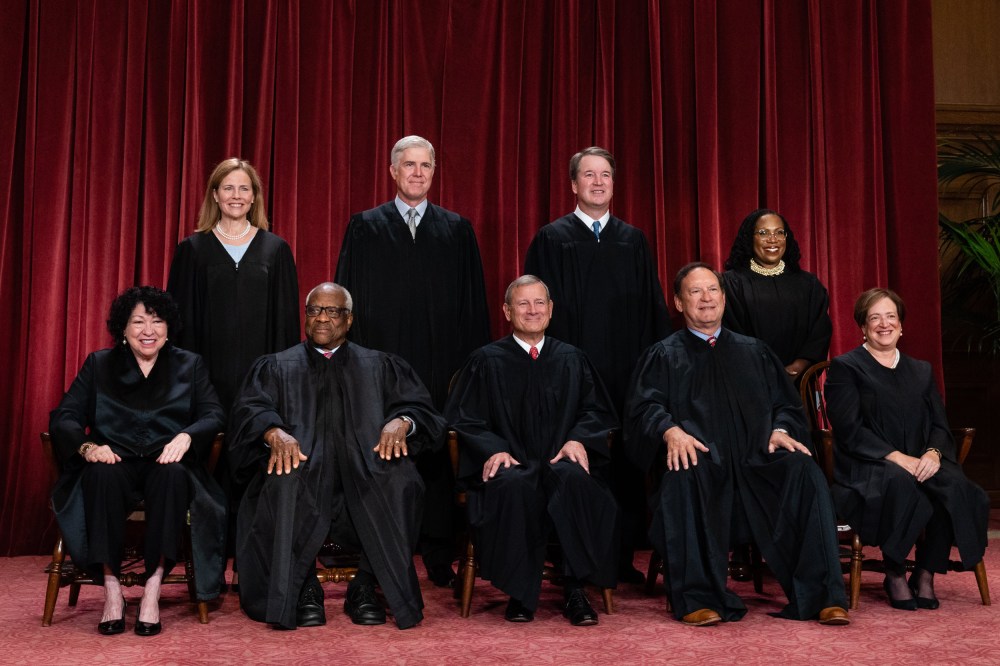The effective end of the Supreme Court’s term on Friday touched off what has become an annual tradition: hot takes summarizing the justices’ work over the preceding nine months based upon data aggregated from the justices’ decisions. These accounts typically focus on surprising-sounding results (50% of the decisions were unanimous!) in service of pushing back against the most obvious summary of the current court: that it is sharply divided between the six justices appointed by Republican presidents and the three justices appointed by Democrats. You can spin the data however you want, but the reality is actually simple. The conservative majority is pushing American law decisively to the right.
Statisticians call this phenomenon the “tyranny of averages” — the fact that averaging a data set tells us nothing about the size, distribution or skew of the data.
Statisticians call this phenomenon the “tyranny of averages” — the fact that averaging a data set tells us nothing about the size, distribution or skew of the data. But these kinds of “judge the Supreme Court by its data” assessments are even worse than just ordinary statistical errors.
First, they fail to account for the Supreme Court’s own role in choosing the cases it decides — so that the data isn’t random to begin with. Second, they ignore all of the Supreme Court’s significant rulings in other cases — those that don’t receive full briefings and arguments. Finally, even within the carefully cultivated subset of cases on which these claims generally focus, these commentaries both miscount the divisions and treat as equal disputes that bear no resemblance to each other. It’s not that this data is completely irrelevant, but anyone relying upon it should take it with a very substantial grain of salt.
Let’s start with the court’s docket. With one tiny exception (which accounted for exactly one case during the justices’ current term), the court chooses each and every one of its cases (and, even within those cases, which specific issues it wants to decide). This docket control, which is entirely a modern phenomenon, means the justices are pre-selecting the cases they decide — including technical disputes on which they may be likely to agree (or, at least, not disagree along conventional ideological lines). Thus, from the get-go, the entire data set on which too many commentators rely is biased toward the justices’ own behavior.
Thus, statistical claims about the court tend to neglect the thousands of other rulings the Supreme Court hands down every term — on what has become known as the “shadow docket.” These rulings are unsigned and almost always unexplained, and they run the gamut from agreeing or refusing to take up an appeal to agreeing or refusing to block a lower-court ruling while the appeal runs its course.
Many of these rulings are relatively insignificant, but some are just as important as — if not more important than — cases that receive plenary consideration.
Consider the April ruling that preserved nationwide access to mifepristone or the December ruling that left in place a controversial Covid-related border control policy. Indeed, there have been 35 shadow docket orders from the court since October from which at least one justice publicly dissented — including six from which all three of the Democratic appointees registered their opposition. (That’s in contrast with a total of seven argued cases in which all three dissented.) Shouldn’t that data figure in any putatively comprehensive summary, too?
As we see statistical claims about #SCOTUS's current Term, remember that, though most analyses focus on the 56 cases with signed opinions, that's a small subset—cases hand-picked by the Justices for resolution.
— Steve Vladeck (@steve_vladeck) July 1, 2023
Among 1000s of *other* rulings, another 35 have had public dissents: pic.twitter.com/RmPl5KNSbP
Finally, even within the skewed subset on which these statistical claims rest, there are serious false equivalency issues. It’s not just that a 237-page ruling invalidating race-based affirmative action policies at virtually every college and university in the country has a far greater impact (and is far more important in almost all respects) than a 16-page technical resolution of a question of bankruptcy procedure; it’s that the way we count votes doesn’t necessarily reflect the true divisions among the justices.
Consider Sackett v. EPA — a major decision in which the court dramatically curtailed the federal government’s ability to prevent pollution of wetlands. Raw data treats that ruling as unanimous — because all nine justices agreed that the lower court applied the wrong test. But with regard to the rule going forward, the justices divided 5-4 — with Justice Brett Kavanaugh breaking from the other conservatives and writing for himself and the Democratic appointees in a sharp separate opinion that embraced a broader reading of the statute. No statistical summary of the court’s work treats that decision as 5-4 — even though, for all intents and purposes, it was.













